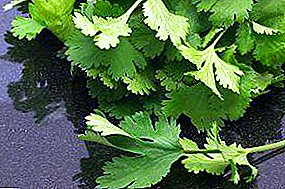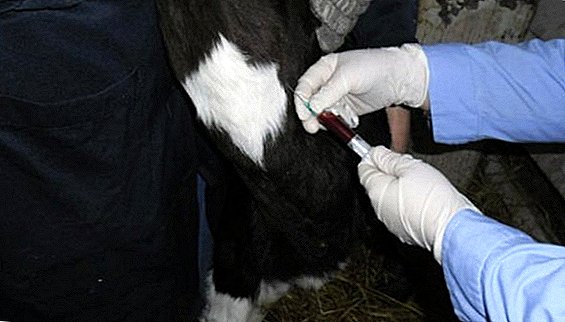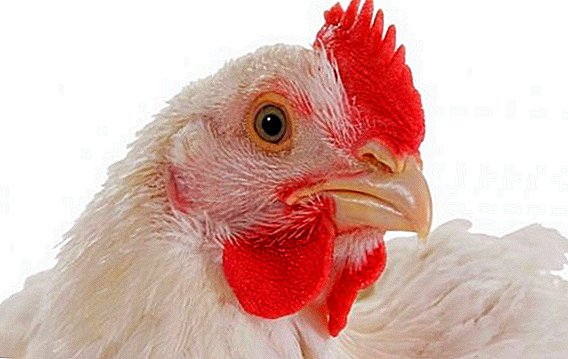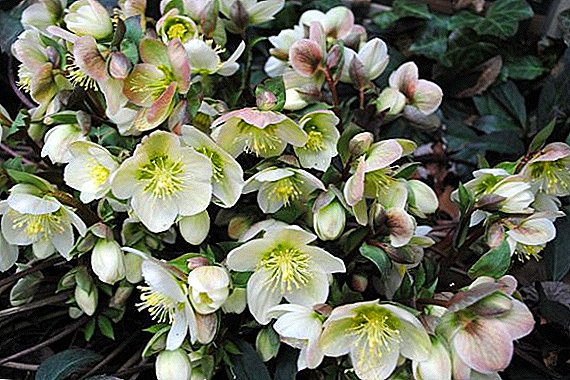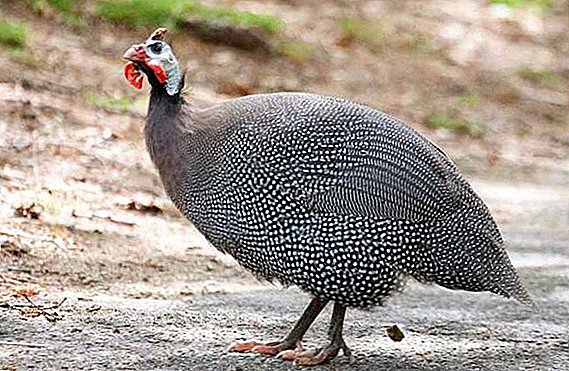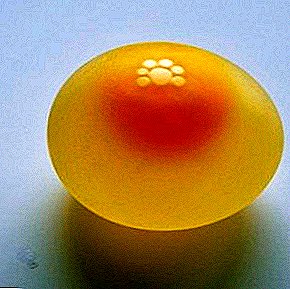
This variety will undoubtedly interest all lovers of small-fruited yellow tomatoes.
Possessing a number of remarkable properties, it is not difficult to maintain and gives a good harvest. This is "Honey Fingers", about this wonderful tomato and the conversation will go.
In the article you will find a detailed description of the variety, you will get acquainted with its main characteristics. We will also tell you about the features of growing these tomatoes, about their resistance to diseases and the finer points of care.
Tomato Honey Fingers: variety description
| Grade name | Honey Fingers |
| general description | Mid-season indeterminantny hybrid |
| Originator | Russia |
| Ripening | 95-105 days |
| The form | Stretched |
| Colour | Yellow |
| Average tomato mass | 50-80 grams |
| Application | Fresh, canned |
| Yield varieties | 12-14 kg per square meter |
| Features of growing | Need tying up |
| Disease resistance | Resistant to major diseases, but may be exposed to fomoz |
 This wonderful hybrid was bred in Russia by our scientists, in 2010 he taught the State Registration. Almost immediately, he earned popularity among fans of yellow varieties for its high taste and versatility in the use of the harvested fruit.
This wonderful hybrid was bred in Russia by our scientists, in 2010 he taught the State Registration. Almost immediately, he earned popularity among fans of yellow varieties for its high taste and versatility in the use of the harvested fruit.
This is an indeterminate middle-ripening hybrid, that is, from the moment the seedlings are planted until the first fruits ripen, 95-105 days pass. Bush refers to the standard types.
This type of tomato can be grown in the open field, but it is better in greenhouses. It has resistance to a number of diseases.
Among the main advantages of this variety emit:
- high taste qualities;
- very good yield;
- disease resistance;
- Finally, just very beautiful bushes that can decorate your site.
There are no flaws. It is noticed that it is necessary to carefully monitor the mode of lighting, this variety loves light. Among the features, specialists and amateurs distinguish good yield and ripening of fruits. It should also be noted its resistance to diseases and high taste.
Good yield is one of the main advantages of this species. With proper care, good conditions and the correct scheme of planting 4 bush per square. m can get up to 12-14 kg of delicious tomatoes.
The yield of other varieties is presented in the table below:
| Grade name | Yield |
| Raspberry jingle | 18 kg per square meter |
| Red Arrow | 27 kg per square meter |
| Valentine | 10-12 kg per square meter |
| Samara | 11-13 kg per square meter |
| Tanya | 4.5-5 kg from a bush |
| Favorite F1 | 19-20 kg per square meter |
| Demidov | 1.5-5 kg per square meter |
| King of beauty | 5.5-7 kg from a bush |
| Banana Orange | 8-9 kg per square meter |
| Riddle | 20-22 kg from a bush |
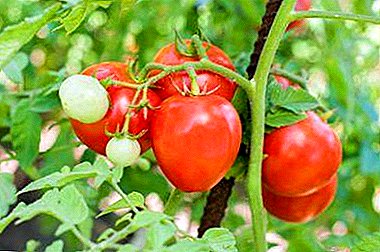 On our site you will find a lot of useful information about growing tomatoes. Read all about indeterminant and determinantal varieties.
On our site you will find a lot of useful information about growing tomatoes. Read all about indeterminant and determinantal varieties.And also about the intricacies of care for early-ripening varieties and varieties characterized by high yield and disease resistance.
Specifications
Fruits that have reached varietal maturity have a bright yellow color. In shape, they are strongly elongated. It tastes sweetish, hence the name itself. In size, ripe tomatoes are small, their weight is only 50-80 grams. The number of chambers 2-3, dry matter contains 4-6%. Harvest can be stored for a long time and tolerates transportation.
You can compare the weight of the fruit with other varieties below:
| Grade name | Fruit weight |
| Gold Stream | 80 grams |
| The miracle of cinnamon | 90 grams |
| Locomotive | 120-150 grams |
| President 2 | 300 grams |
| Leopold | 80-100 grams |
| Katyusha | 120-150 grams |
| Aphrodite F1 | 90-110 grams |
| Aurora | 100-140 grams |
| Annie F1 | 95-120 grams |
| Bony m | 75-100 |
This is a very tasty variety, it is beautiful fresh. Perfect for wholegrain canning and barrel salting. For the manufacture of juices and pastes, these tomatoes are not used.
A photo
Next tomato "Honey Fingers F1" presented in the photo:
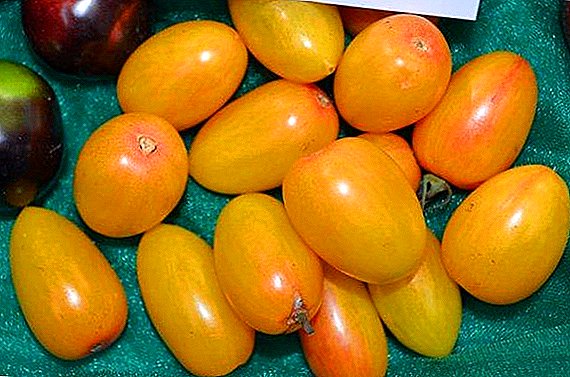
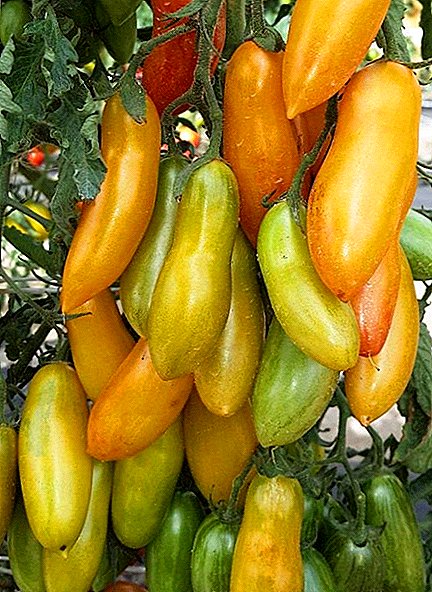
Features of growing
 These plants are very fond of heat and the sun. Therefore, if it is intended to grow them in open ground, then only the southern regions are suitable for this.
These plants are very fond of heat and the sun. Therefore, if it is intended to grow them in open ground, then only the southern regions are suitable for this.
In the conditions of greenhouse shelters can be grown in the middle band, the northern regions for this type of tomato are not suitable.
Despite the fact that the plant is not very high, a lot of fruits ripen on its branches, and therefore they need a good garter.
"Honey Fingers" very well respond to complex feeding. Special attention should be paid to the lighting mode..
In more detail about fertilizers for tomatoes read articles:
- Organic, mineral, phosphoric, complex and ready-made fertilizers for seedlings and TOP best.
- Yeast, iodine, ammonia, hydrogen peroxide, ash, boric acid.
- What is foliar feeding and when picking, how to conduct them.
Diseases and pests
The Honey Fingers tomato variety, although quite resistant to many diseases, can still be exposed to fomoz. To get rid of this unpleasant phenomenon, it is necessary to remove the affected fruit, and the branches of the plant should be treated with the preparation "Khom". You should also reduce the amount of fertilizers, which include nitrogen, and temporarily reduce watering.
Dry spot is another disease that can affect these tomatoes. The most commonly used drugs against him are "Antracol", "Consento" and "Tattu". From malicious insects may be affected by a rusty mite. Against him often use the drug "Bison".
If the plant is in a greenhouse, then the greenhouse whitefly invasion is most likely, the drug "Confidor" is used against it.
Conclusion
As can be seen from the description, the variety "Honey Fingers" knowingly earned the respect and love of both gardeners-amateurs and farmers throughout Russia.
Look closely at this type of tomato carefully and it will delight you not only with its harvest, but also decorate your plot. Have a good season on the plot!
| Medium early | Superearly | Mid-season |
| Ivanovich | Moscow stars | Pink Elephant |
| Timofey | Debut | Crimson onslaught |
| Black truffle | Leopold | Orange |
| Rosaliz | President 2 | Bull forehead |
| Sugar giant | The miracle of cinnamon | Strawberry dessert |
| Orange giant | Pink Impreshn | Snow tale |
| Stopudov | Alpha | Yellow ball |


